Last updated on September 6th, 2024 at 08:56 am
Podcast: Play in new window | Download | Embed
A fabulous interview with Alessandro Catorcini! He has over 20 years of experience in tech. He spent over 15 years at Microsoft in various roles from being a software architect, a Principal Group Program Manager. He’s worked at Amazon and now he and I work at Oracle’s Cloud Infrastructure Team also known as OIC. He is one of those people I see who are solving problems that are large at scale. And another very interesting tit-bit is that he has done over 200 Interviews in the last 2 years at OCI.
See also – TPM interview questions
We talk about:-
- TPM interviewing tips.
- Five core traits of TPMs.
- TPM leveling.
- What are the things to watch out for during an Interview in General.
- Compare the role across various organizations. Eg: Microsoft vs Oracle.
- What are some of the most understated qualities a TPM candidate must have?
- How do you evaluate a candidate’s technical aptitude?
Listen and enjoy!
ps: You can find more podcasts here. And the next episode here.
Transcript of the podcast;-
Interview with Alessandro Catorcini
Mario: Hello and welcome to the TPM podcast with Mario Gerard. I plan on doing a series of interviews with fellow TPM’s and PM’s, with top leaders and invite them to share their ideas with the TPM community. So, if you’re interested in sharing your ideas, do reach out to me.
Today, I have with me a very special guest, Alessandro Catorcini, and we’re going to chat about a couple of things, primarily revolving around the fundamental characteristics of TPMS, how we level TPMS and what the TPM journey looks like. Alessandro has over 20 years of experience. He spent nearly 15 years at Microsoft doing various roles from being a software architect to a group principal program manager. He then worked at Amazon and now he’s at Oracle’s Cloud Infrastructure team where he and I are colleagues.
He’s one of those people I see who take and solve large skilled problems. Another very interesting tidbit about Alessandro is he’s done over 200 interviews in the last two years at OCI. Alessandro, why don’t you introduce yourself.
Alessandro: Hi everyone, and thank you, Mario, for the introduction, it’s kind of large-scale problems. Yeah, well more than large-scale problems, I’ve solved a lot of problems of every size, some of which happened to be larger than others.
Mario: Yeah, today and that’s when I saw your tagline, ‘I solve problems’ or something to that context.
Alessandro: Yeah, that came out of a joke actually. When I was working with a networking team, they started calling me behind my back you Mr. Wolf, like Winston Wolf of Pulp Fiction.
TPM interviewing tips
Mario: Cool. So, you have also done a lot of interviews for us.
Alessandro: I did, yes.
Mario: Approximately over the last two years what do you think the count is?
Alessandro: Actually, I was looking at the scoreboard, there is a keyboard of the interviews which is actually funny. I was at 263, I think, since January 2017.
Mario: Wow! That’s a lot of interviews. And you do them for TPMs, PMs, and Ms.
Alessandro: Yes, pretty much anything.
Mario: Across the board.
Alessandro: I have done engineers, PMs, TPMs, even admins, solution architects, some have been really interesting stories, guys that came for one job and got something completely different.
How do you define the TPM role?
Mario: Let’s start with, like from your perspective, how do you define the TPM role?
Alessandro: There’s a story that I remember hearing at a symposium of PMs at Microsoft probably a decade-plus ago. Yes, and it stuck with me because it captures the essence. If you think of a team like a big cake, you can start slicing it and you could slice a very clean slice that would be engineering, a very clean slice that would be product management, a very clean slice that is QA. When you’re done cutting slices, all the crumbles that remain on the plate that was keeping it all together, those are the TPMs.
Mario: I was thinking that you were going to say the icing on the cake which kind of spreads across, that’s how we also could look at it.
Alessandro: That is probably the more noble way to define it, but yes. My view is that effective TPMs are the connective tissue, what keeps it all together, what really gives structure to things, gives shape.
Mario: How do you see this role? Since you’ve interviewed a lot of people across different organizations and you worked at Microsoft for a very long time, how do you see this rule differently in different organizations? Do they differ across organizations?
Alessandro: Let me answer with another metaphor. They differ in race but not in species. So, the appearance may look different, but the essence is the same.
Mario: And what is the essence?
Alessandro: The essence is all about communication, getting things done, focusing on getting people to collaborate, focusing on streamlining processes, focusing on making sure that the machinery that is executing something runs and impede at maximum efficiency.
Mario: Yeah, I think I was once given an opportunity where I had to come in and build up a new team. After like eight months to 1 year, I remember telling my F-111 manager, now it’s a well-oiled machine. It was hum and did what it needed to do on its own with a little less effort. Then originally, we were near putting all the pieces together, there was a lot of mites, there was no lubrication. There was a lot of chaos, especially for an embedded TPM within a team, but that team had a lot of dependencies then you have a lot of issues that you’re trying to deal with. There’s a multitude of problems that you might have.
Alessandro: Again, using yet another metaphor just to confuse things a little bit more, I like to think of TPMs as a catalyst for their reactions. So, you’re not necessarily participating in the reaction, but the reaction doesn’t happen without you.
Mario: You do have a lot of metaphors. That’s a very interesting way to think about it. You start, you are the beginner and you give direction and you push your team to go in a certain direction.
Alessandro: You’re the initiator, the facilitator, and the closer.
Mario: That’s a good way to look at it, the initiator, facilitator, and the closer. So, you do provide the direction, you make sure that they get to the point they need to get to, but they might do a lot of the work on their own, you’re just guiding them.
Alessandro: You’re providing the framework for this to happen.
Mario: Yeah, that’s a very good way and I’m giving you an example of something like that, like a framework, could be like a stem process or anything.
Alessandro: Typically, a framework comes in the form of a culture, a process, an organization, a tool and it really depends on what you’re trying to do. It is very kind of, I realize that I’m giving a beautiful non-answer here.
Why does an organization need a TPM?
Mario: No, let’s look at it from another perspective. We are talking about what is the role of the TPM, but if you think about it the other way, why does an organization need a TPM in the first place?
Alessandro: It’s like an organization doesn’t need a TPM initially. You get to a point where the level of interaction between the parts needs to be grown organically and not inorganically, so you need the order. If you think about it, it’s like growing hair. If you have short hair you can afford to not brush it, but if you don’t brush hair, when it gets longer it gets tangled.
Mario: And that’s why TPMs are needed.
Alessandro: Basically, TPMs apply order in the communication across parts of the organization. They create wormholes between parts of the organization that wouldn’t talk necessarily. They provide sharing of information, they provide standardization of the processes. They provide multiplication of the effectiveness because they multiply the opportunity to collaborate.
Mario: I think that fits into what we originally talking about. You call yourself a problem-solver and that in itself is a very unique skill because I’ve seen you solve very large-scale problems which are a combination of organizational culture, maybe. It might be a combination of technical things that need to be sorted out when we process and it’s actually a combination of the whole thing, right?
Alessandro: That’s it. I had a blessing in my life of working on a lot of different domains, so I kind of had the luck of being exposed to a lot of different ways of doing things. Which is why they kind of threw me in this role of, this is a big bowl of chaos that we don’t know how to get out of, go figure it out. Since I joined Oracle here, that’s pretty much the type of role that I have been playing.
Mario: What is the main success matrix that you use to define the result? Is it simple normally or is it a very complex metric or is it like, hey, get this done?
Alessandro: Again, like everything in program management, the answer is, it depends. It just depends on who you ask and depends on what success looks like. Usually, rather than metric, I like having an exit criterion. So, how do I know that I’m dark and white? What does ‘done’ look like? Done sometimes could be simply good enough in a scale or just a black or white. For example, when I had set as a goal to jumpstart the DCIM for infrastructure. When I started, we were doing the management of our data centers with a whole bunch of Excel spreadsheets. Well, guess what? Been there, done that, I know that that thing starts collapsing pretty quickly and if you don’t fix it when you are small then it becomes too late. So, I kind of scrapped together a developer and another TPM to kind of start prototyping what an open DCIM solution would look like so that we could cross-reference the asset information of what was going into the data centers with the defect tickets, with the recalls, with the versions of the firmware, with all the details that you can imagine.
We ended up with a tool that can now graphically extract by navigating from a hierarchical map that goes from the world to the single server within a rack, within a whole, within a row, within a data center, within a region. It can tell you everything about the machine including what is running on it, what version of the software, who is using it, has it made money last month, everything. Including what other part numbers of the things inside, what we have ever changed in the lifetime of this machine, what is the likelihood of component x failing in the next y days and all that.
Mario: For people who don’t know a lot about this, I’d like you to tell them what’s the impact in a very high-level?
Alessandro: Let me give you a practical example of the crowning achievement of this tool. Do you remember a few months ago, not…?
Mario: Spector?
Alessandro: No, it wasn’t Spector, it was the second one, the 1 TP I think, the one that came out from Intel. So, it was a big scramble we had to identify which machines were affected and patch them in 24 hours. For the whole fleet of the whole Oracle Cloud.
Mario: Yeah, and for somebody else who, for a company, so company-wide will have their own leaders that are managing it.
Alessandro: And name the divisions within other larger companies that may be close to ours or they’re not done yet and it was September when they started. Even more importantly, they don’t know if they are done because the problem is an issue of detection, not an issue of a fix.
Mario: That’s interesting. The reason I was bringing this up and I was asking this question is you also authored the leveling guide for OCI, for Oracle Cloud Infrastructure team. One of the primary things you mentioned on the leveling guide was scope and impact.
Alessandro: Yes.
Mario: And that’s why I was talking about the scope and the impact.
Alessandro: But they’re not the same thing.
Mario: They’re not the same thing, they’re totally different but you spoke to the scope and there was a little bit of the impact. Can you tell me more about how you see that?
Alessandro: Usually, how I define it is that scope is the direct blasting cone of the people that you’re working with and that they’re directly affected by the change that you’re introducing. The impact is the direct effect of the change that you have introduced. So, let me make an example, the scope of the work of starting the CIM was a very small team of developers that had to work on that and not something else, the impact has been company-wide.
Mario: Do you put one over the other?
Alessandro: Let’s put it this way, the scope is something that is easy to gauge, the impact is something that you can hold.
Mario: Okay.
Alessandro: That you can design for and partially control.
Mario: But it’s very hard to, yeah.
Alessandro: One is an input variable, one is an output variable?
Mario: Yeah, and you don’t know the output variable, how big or how small it is.
Alessandro: You don’t know how non-linear the system is.
What do you look for in a TPM?
Mario: Yeah, as simple as that. So, let’s move to another topic of interviewing because you’ve done so much, you’ve interviewed so many candidates, what do you look for in a TPM? If you can give five things that you expect, you’re looking for at an interview.
Alessandro: That’s a good question. Actually, I think that it is also something that depends a lot on the person that you have in front of you and the flavor of TPM that you’re looking for. Of course, you look for the fundamentals.
Mario: And what are the fundamentals?
Alessandro: The fundamentals…
Mario: Communication?
Alessandro: You need a good communicator and a special…
Mario: Articulation?
Alessandro: I’m looking for a specific type of articulation I really like, and you must have it. But, in my experience, it correlates with success in program management to really interiorize the ability to answer in a spiral. If I’m asking you a very complex question that can be distilled to a yes or no, the first words out of your mouth ought to be yes or no. Then you can give me levels of explanations that go to the moon and back but answer the question the first five seconds so that you will always gather the attention of the right people, the ones that give you 30 seconds of their attention. We have in our management chain people that we can both imagine where if you don’t answer the question in the first 30 minutes, they flip the bit.
Mario: Not 30 minutes.
Alessandro: 30 seconds.
Mario: I think I know the meetings you are talking about where somebody ask you a very specific, very complex question, which you can probably write a three-page book.
Alessandro: Sometimes the question is as easy as, are you on track for shipping this one on there? You can start, well if this happens, if this happens.
Alessandro: At the end of the story, what management has to hear is yes or no.
Mario: Yes.
Alessandro: Do you need my help, or you do not need my help? It’s black or white. Either the cat is alive, or the cat is dead, sorry no quantum here.
Mario: That’s a very interesting thing, right? Ok, so we’re coming back the original question, communication.
Alessandro: Communication, poise under fire. Either you tell me a story of some time when you had to go to hell and back or I’m going to manufacture one where I’m sending you to hell and see how you get back.
Mario: Yes. I also think on the same thing, I ask people whether they sometimes have a thick skin, right?
Alessandro: Yes.
Mario: Because there are many situations where there’s chaos, literal chaos…
Alessandro: Especially with very senior candidates. I love the interviews where we basically ask them to show me your shield and how did you get this bump, how did you get the scratch? What did you learn from it, was it fun, and what were you guys doing?
Mario: Yeah, and did you have fun along the way and were you able to sustain and withstand?
Alessandro: At end of the story, it’s amazing how in the technology world it’s pretty easy to characterize people into two enormous categories, of the builders and the administrators. Builders extract their pleasure by creating something new where there is nothing, by taking an idea and distilling it into something. The problem is that they get bored if you tell them to maintain something that has already been built. The administrators are exactly the opposite, they need a world where the rules are already defined, more or less well, and they’re going to maintain it and run it like a beautiful Swiss clock. You need both at different generations, at different stages of the process.
Mario: Yeah, there are different stages of even the product, a product or service. A launch brand-new service is one thing versus maintaining an existing service.
Alessandro: Let’s put it this way, you don’t want the builder in operations.
Mario: Yeah, exactly.
Alessandro: You want very few in very controlled spots.
Mario: Yeah, and we are diverting, but when I was looking for a job when I moved to OCI, one of the things I was looking for is, where is somebody doing something ground up, from scratch. I wanted to be in the cloud and this was the right place for me.
Alessandro: I told you the story of how I came here. I heard socially that Oracle was building a team that was building a cloud from scratch. I hustled to find a phone number of the director of recruiting here that I could call and say, hey, I heard that you guys are building a cloud, how do I get in?
Mario: Yeah, and it’s interesting that you come and find your way after that. We all move things, or we figure out where we want to fit in.
Alessandro: I usually explain this with the movement of tectonic plaques. I mean when a content expands you definitely can’t stay where you are. You either follow one of the moving parts or you grow to control all three, or you jump onto another. If you stand still, you sink.
Mario: Yeah, that’s true. Coming back to our original question, what are the fundamental characters? I think we said that one was communication, two was poise under fire, three?
Alessandro: Three is thinking outside of the box.
Mario: That’s a little ambiguous.
Alessandro: Usually, I like the people that can show me that they can get out of a Kobayashi Maru. So, if the rules of the game are stacked in such a way that they have already lost, change the freaking rules or play a different game.
Mario: I never thought about that.
Alessandro: I mean, the situations where, oh, yeah…
Mario: You’re pushed into a corner and there’s no way out, you have to think.
Alessandro: Or, you cut a hole and you go to the room next door.
Mario: Yes. That’s very interesting. Okay, and that’s more for very experienced people.
Alessandro: Well, not necessarily because usually, these are instincts that, you don’t learn this type of thing.
Alessandro: So, what happens if I give you a situation like that or when you have been in a situation like that, what have you done?
Mario: Yeah. Okay, three. Any other things you can think about?
Alessandro: Then, of course, as you grow, I think that communication is a very wide range. I care a lot about negotiators, and the negotiator is basically an intrinsic tradesman, that okay, I need that thing that you have. What do I have that I can trade for it? And it doesn’t matter if I think it’s worthless because you are the one that has to think it’s not. When you find people that have this mindset, usually, they’re going to be phenomenal TPMs.
Mario: Negotiation, that is a very interesting skill because you call yourself a problem solver and one of the key points of a problem solver is to negotiate when somebody doesn’t want to give up something.
Alessandro: And sometimes you negotiate a problem away.
Mario: Oh, you make the problem go away. Again, that comes back to thinking outside the box. So, it fits in together as a puzzle of all these, do you think any other common traits?
Alessandro: Curiosity.
Mario: Curiosity?
Alessandro: It all started as a joke, the joke of the shoe company that wants to expand their business to Africa and sent their two salespeople. After one month, they both send a telegram. One said, why did you even send me here? Nobody is wearing shoes, coming back tomorrow, a huge waste of time, stop. The other one sends a telegram saying, phenomenal opportunity, nobody’s wearing shoes, please send me an entire sampling and I need to stay here more. Which one is a better TPM?
Mario: Perspective, right? It’s how you think of problems, whether you look at them on the negative side. I have actually seen that when I worked in other places where you can see TPMs who just focus on the negatives. How do you bring up a problem? Do you say the negatives of the problem or what the problems will be, how do you phrase is that?
Alessandro: The best way to frame a problem is to explain what the world would be if it was not there. Describe how the world would be had this not been around. Then everybody will focus on how to remove it.
Mario: Any other qualities you think?
Alessandro: Well, then we start to go into the more specialist ones where you need, of course, to be organized, to be good at multitasking…
Mario: Emotional intelligence.
Alessandro: Emotional intelligence usually is almost inevitable if you are a good negotiator, I probably should have mentioned that upstream of that. Executive presence sometimes, because I mean honestly, especially in organizations like ours, a large number of TPMs end up being XO’s of some leader of a subtype. Sometimes it’s important to be able to tell them, hey you are wrong, and this is why even when they are about to go full steam down. And they also are open to hear a rebuttal and understand why not.
How do you evaluate how proficient one is for TPM role
Mario: So, we went through a good list of characteristics or what TPM means. How do you evaluate like how proficient one is in that particular area? Do you have any tips or pointers? Or, is it just experience, it comes down to experience?
Alessandro: Sometimes, communication you evaluate just directly. How clear are they? How do they react to interruptions, reads nonverbal cues? Do they get impatient, do they get flustered? Poise under fire, same thing. If you start throwing interruptions and throwing it away or taking their most prized project and started poking holes in it, how do they react?
Mario: Let’s talk a little bit on that, do you have any red flags?
Alessandro: Ego.
Mario: Ego is a big red
Alessandro: Ego is the number one enemy of a TPM because a TPM is a ‘we’ entity. At the end of story what you have done you wouldn’t have been able to do in isolation anyway. Basically, you are an operator, you need an operand, so how do you respect your operands?
Mario: And sometimes they might be difficult to work with.
Alessandro: It doesn’t matter.
Mario: It doesn’t matter, right.
Alessandro: Maybe you are difficult to work with. Especially in an interview setting, that’s usually a red flag. “I had to leave because the guy was terrible.” Oh, really? You’re telling me that when there is a problem you flee and that you can’t work with hard people, red flag.
Mario: What are the other red flags? Ego is definitely one of the number one thing, what are the red flags, negative?
Alessandro: Fear of the dark. So, if there’s something unknown and you don’t dive headfirst, you’re showing strong traits of an administrator, which again in our culture right now is not a primary trait for a TPM.
Mario: I’ve never thought about it that way. So, you give somebody a problem and they don’t know the solution to it but somebody who goes in headfirst and tries to solve the problem…
Alessandro: You give them a problem and something that they have absolutely no clue about and that they definitely can’t, how do they react? And it’s not a matter of do they solve the problem, it’s how do they react?
Mario: Yeah, so you’re judging the reaction there.
Alessandro: The person that becomes defensive and says, “oh, I don’t know anything about this, I’m sorry I can’t do this.” Well, what if you didn’t have a choice? What if, if you didn’t do this you die, what do you do?
Mario: That’s two great points, any other red flags?
Alessandro: The person who is always right.
Mario: Or who thinks he’s always right. Yeah that’s
Alessandro: I remember that I was snickered when Thomas was reading the leadership principle that I’m right a lot because it is basically a gigantic balloon inflation for egos. Because, if I’m assuming that I’m right a lot and I’m right a lot, then I’m not going to be questioned by anyone. You should always be the first one that put some questions, “okay, let’s suppose for a second that I was wrong, what would happen? Then what you’re saying doesn’t make sense because it is disproved by this point and this point and this point but hey, wait a minute, what about this one? Actually, yeah, you have a point here, so how do I reconcile that?”
Mario: Willing to admit, yeah.
Alessandro: It’s not just willing to admit, it’s really leading with what if.
Mario: I think being humbled to a certain degree right?
Alessandro: Remember, if you’re the facilitator you need to ease things in, you never can take a rigid approach.
Mario: Any other red flags?
Alessandro: Other than the obvious ones I can’t…
Mario: Okay,
Alessandro: The person who comes to you is an obvious jerk. The situations where the obvious red flag is the person that simply tries to portray themselves as what they are not.
Mario: And that comes across very fast because for people like you who’ve done like hundreds of interviews, in the first five minutes you probably know…
Alessandro: I think some were epic. I remember, what was it? It was probably 10 years ago, this college-hire came from a super renowned school on the East Coast in Massachusetts that starts with A and he had this resume that was absolutely incredible. I mean, this kid was just fresh out of college, had already written compilers, was fluent in three languages, was awesome. His misfortune was that in his loop he was supposed to be fluent in French, English, and German and he ended up in the loop with a French and English, sorry in Italian, French, and German. He ended up on a loop with an Italian, a French and a German, let’s say that didn’t go well. You know that the loop is not going well when you’re starting the conversation with “okay, what else in this resume is not true?”
Mario: Let’s look at our side of the picture, what perks your interest? Like you literally sit up and it makes you like listen to a convent.
Alessandro: Oh, come on. First of all, there are people that have types of experiences that are just fascinating. Honestly, I love interviewing because of the section of humanity that it presents you from. I’m interviewing anything from former officers of nuclear submarines to directors of the FBI, to people that were doing underwater welding, to people who wrote large-scale trading systems for hedge funds. Every one of these people has absolutely fascinating stories to tell and usually the best way to create a report to share really a sincere interest for what these people have done. And really make an effort to understand not just what it is that they did and what their role was but why it was important, why it was exciting, why could it have been important for them and that type of thing.
Mario: Yeah, that’s an interesting thing.
Alessandro: If you think about it, what you’re doing with an interview is trying to get the X-rays of the soul of this person. So, the sooner you get to the soul the better it is and you don’t get to the soul by asking them why the manhole cover is around.
Mario: Exactly. When you talk about looking into the soul, I just reflect on one of the recent interviews I had. It probably will stick with me for a long time because this guy came in, I gave him a problem to solve. He didn’t know what the problem was, he didn’t have any exposure to that space but how excited he was to jump in and solve, it made me excited where I was like, “okay, I’m going to help you do this. I’m going to walk with you.”
Alessandro: There’s one thing I forgot to say that is also a way that I always explain what a good TPM is. A good TPM doesn’t paint the fence, builds Tom Sawyer’s fence and throws a fence painting party and everybody flocks to it because it’s cool.
Mario: Yeah, that’s absolutely true.
Alessandro: If you can inspire people to do what you need to be done, then you’re already halfway there.
Mario: Yeah, and some people I think are very unique, that comes from within the soul, within the fabric of the human being, that guy was just excited. I think there’s also probably a bit more than that, he had his fundamentals really strong because of which he was able to solve the problem really well, but he was super excited. And he was having fun because he’s like, he’ll say something, he’ll do something and then he’ll, “okay, because of this, these four things are going to be impacted and these are the problems which will happen if I do this. I’m going to solve this like this, I can do this like this or this is the impact of that.”
Alessandro: When you find somebody that has systemic reasoning like that…
Mario: It’s just like I was super excited and that was…
Alessandro: Think about it. You can approach problem-solving through systems or through tasks. If you approach it through tasks, everything’s a snowflake and a mistake mean I go back and redo it. If you approach it through a system, it is going to be a progressive growth where eventually the problem will just melt away.
Mario: Hi folks, I hope you enjoy that. I have to split the interview into two parts. Simply play the next episode to hear the rest of the interview with Alessandro. And, if you’re interested in learning more about TPMs and what TPMs do, feel free to check out my website www.mariogerard.com. Thank you.
The End 🙂

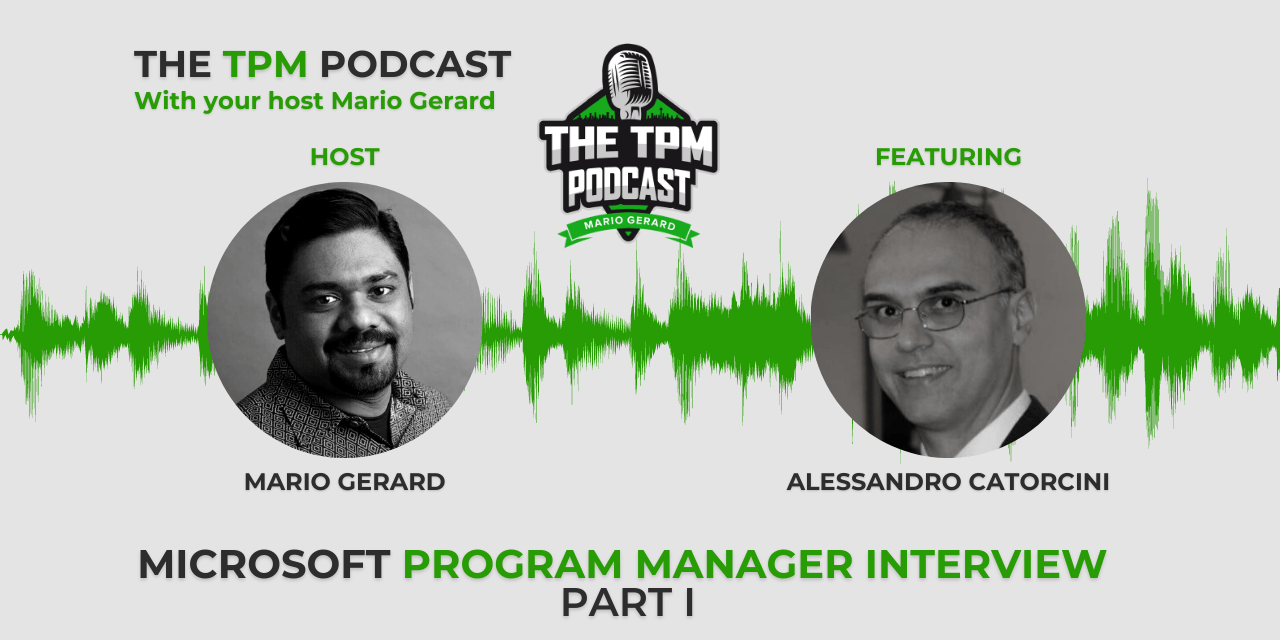

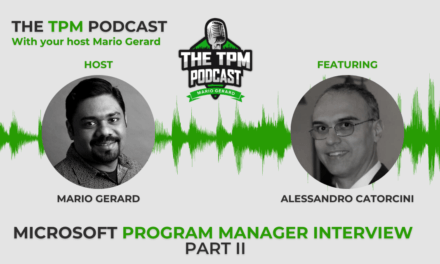
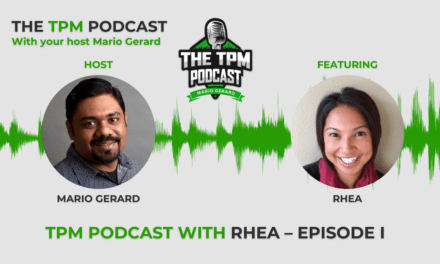
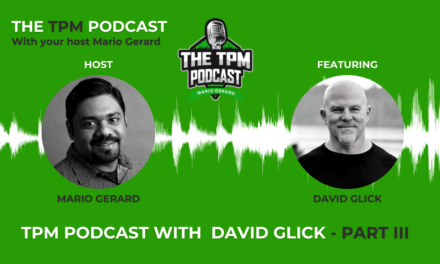








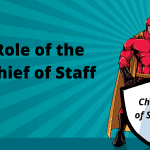



Can you please provide some deep dive real world stories for example that demonstrate:
– story of Going to hell and back
– thick skin
– poise under pressure
You started talking about the DCIM example, it would help to have more such stories that shows the problem to solve, challenges involved, your role, how you solved it, and the impact.
Appreciate any pointers to such examples.
Thanks a lot, guys! I was not sure what to think when Mario offered me the opportunity, but your response was humbling and awesome at the same time. Thank you.
wow.. this is so rich with information. I had to pause and think for a lot of the stuff to really digest it. It is amazing.
Well said and good list for necessary TPM qualities (for me, #4 is what makes the TPM the ‘Closer’): 1. Communication 2. Poise under fire 3. Thinking outside of the box (Kobiyashi Maru– nice reference) 4. Negotiator qualities 5. Curiosity.
Looking forward to hearing more.
Nice podcast. TPM – Catalyst, initiator, facilitator and closer. Also the last piece of left over cake is a good analogy. Very helpful.
Initiator, facilitator and closer. — Summed up perfectly!
Very Informative, Mario!! and Alessandro. Thanks a lot as this helps me as I am currently preparing to transition to TPM role.